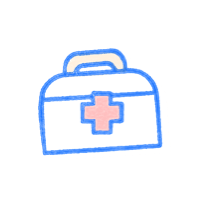EMT Airway Management Techniques
Effective airway management is a cornerstone of patient care in the high-stakes world of emergency medical services. An individual cannot survive long without oxygen, and permanent brain damage can occur after just four minutes without oxygen. So, this critical aspect ensures that patients receive adequate oxygenation and ventilation, establishing a foundation for successful resuscitation and improved outcomes.
From thorough assessments to airway management techniques, EMTs are pivotal in securing and maintaining patient airways across diverse emergency scenarios. So, as you prepare to embark on your journey as an EMT, you’ll need to be well-versed in airway management techniques.
5 Elements of Proper Airway Management
Your patient’s airway serves as their conduit for oxygenation, so when it’s compromised, you need to act quickly. However, proper airway management isn’t as simple as using a manual airway management technique or inserting an OPA or NPA. Instead, it’s a multi-step process involving everything from an initial assessment and positioning to providing supplemental oxygen and suction.
Assessment
In any emergency situation, assessment is crucial to properly treating the patient. The same applies to airway management techniques – first, you must assess the patient. Basic airway management starts with evaluating the patient’s consciousness level, checking for obstructions in the airway, and taking respiratory vitals.
Work quickly and efficiently during this phase of the process, but don’t rush. Use your critical thinking skills and evaluate all aspects of the case to ensure you make an informed treatment decision. Once you have thoroughly assessed the patient, take action and begin completing the necessary steps to manage their airway.
Positioning
When the patient is responsive and alert, and you don’t suspect trauma, you may allow the patient to assume a position of comfort. If you’re dealing with a trauma patient, elevating or turning the backboard may assist in your airway management efforts.
If the patient is unresponsive, you may use various positioning methods to open the airway. The head-tilt chin lift approach is the most common approach for non-trauma patients, while the jaw thrust approach is standard in cases of suspected trauma. The tongue jaw lift is an effective way to open the airway and airway obstruction assessment but isn’t used during artificial ventilation.
Airway Adjuncts
You may use an oropharyngeal (OPA) or nasopharyngeal (NPA) airway alongside a manual airway maneuver to manage an unresponsive patient’s airway.
Oropharyngeal airways, used to open or maintain the airway by preventing the tongue from blocking the epiglottis, will relieve the soft tissue obstruction of the posterior airway. However, before inserting an OPA, ensure the patient doesn’t have a gag reflex, as aspiration, vomiting, and laryngospasm can occur.
Nasopharyngeal airways, which are flexible tubes inserted into the nostril, help by bypassing upper airway obstructions at the level of the nose, the base of the tongue, or the nasopharynx. In some instances, more than one OPA and NPA may be used or necessary to maintain an open airway and facilitate bag-mask ventilation.
Supplemental Oxygen
After opening the airway, delivering supplemental oxygen helps increase oxygen concentration in the inspired air. EMT oxygen administration helps improve oxygen delivery to the tissues and organs, supporting the body as it recovers from its stint without adequate oxygen.
Provide supplemental oxygen using nasal prongs or a non-rebreather mask, choosing the option that aligns with your local guidelines.
Suction
Suction often plays a vital role in opening and clearing an airway. Blood clots, saliva, vomit, and other bodily fluids can get in the way, affecting the airway and potentially causing further issues. Basic airway management techniques don’t prevent aspiration, so it’s important to have suction equipment ready to use should the need arise.
As you proceed with your airway management technique, be ready to use suction equipment to get the job done safely, properly, and efficiently.
Test Your Knowledge With Pocket Prep
Mastering airway management techniques is vital for any EMT, especially given its importance in improving patient outcomes. As you progress through your EMT training and begin preparing for your final exams, memorize the principles, indications, and procedures associated with each step of the process.
In doing so, you can prepare yourself to navigate diverse emergency scenarios with confidence and competence.
When it comes time to study for your final exams and test your knowledge of airway management techniques, our NREMT EMT Exam Prep is here to help. It covers the core topics the NREMT EMT exam covers, helping you thoroughly prepare by testing your knowledge on everything from airway management techniques to patient assessment scenarios.
So, whether you’re ready to test your knowledge or prep for the exam, our test prep can help!

